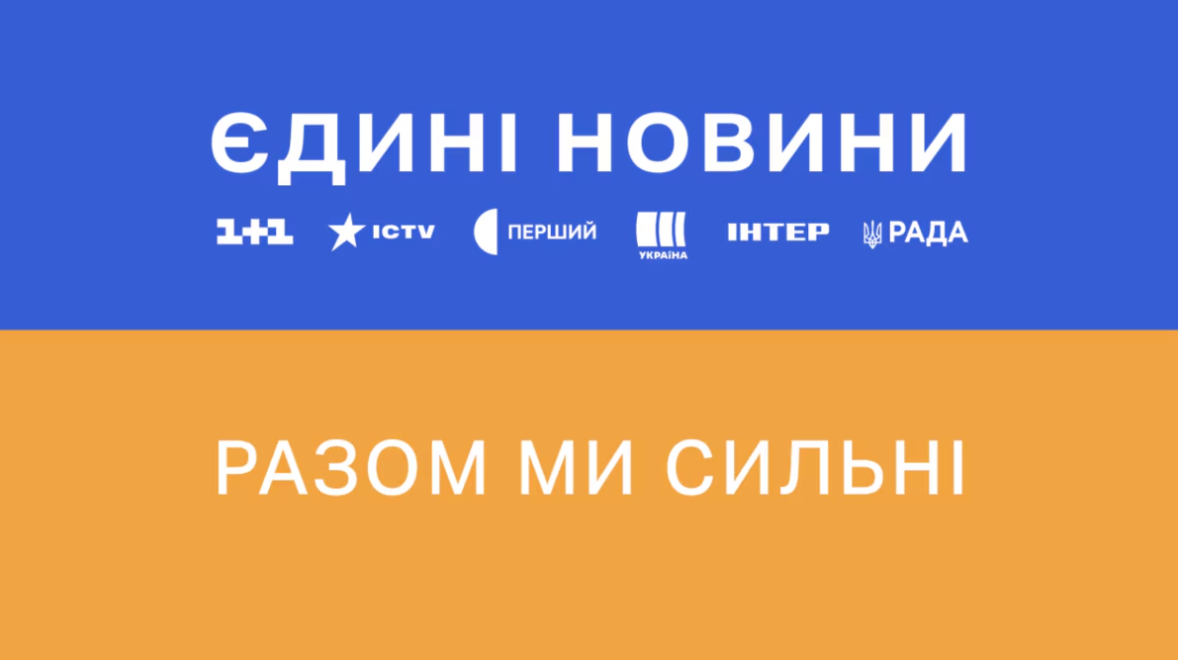Telethon breaks anti-records: Ukrainians no longer believe “state” information
2 September 11:12
Ukrainians are increasingly losing trust in traditional media, and in particular in the United News telethon. According to a survey conducted by the Sociological Group “Rating”, the joint telethon topped the anti-rating of information sources: 39% of respondents said they did not trust it. Instead, Ukrainians show the highest level of trust in telegram channels and YouTube, which are gradually becoming the main platforms for receiving news, "Komersant Ukrainian" reports.
Telethon: the leader in distrust
The joint telethon “United News” demonstrates the highest level of distrust among all the sources considered: 30% of respondents said they did not trust the telethon, and another 9% said they “rather did not trust” it. Only 18% of citizens completely or “rather” trust it.
At the same time, its core audience is made up of residents of the West and Center, rural residents, respondents with lower levels of education, those with lower incomes, and older people who generally prefer traditional television. But even in these groups, high levels of distrust remain a systemic problem.
What and where they watch: Telegram and YouTube are ahead
Telegram is the main source of news and information: 40% of Ukrainians read the channels daily, and another 12% read them frequently (4-5 days a week).
This is followed by YouTube videos (32% use them often or constantly), Facebook (28%), telethons (25%), and Viber chats (25%).
Regular reading of the printed press remains a marginal practice (3% read it regularly; 84% do not use newspapers/magazines for news at all).
Geography and demographics of consumption:
- Telegram is used more often by Kyiv residents, residents of regional centers and the East; more often by young people aged 18-29, people with higher education and those with higher incomes.
- TikTok as a source of news is more popular in the West and Center, among younger people and those with lower income and less education.
- Instagram is popular among young people, those with higher income, and those with higher education; Facebook is more popular in rural areas and in the 30-59 age group.
- YouTube is more often watched in regional centers, by those with higher incomes and higher education.
- Television (including the telethon) is watched mostly by older people in rural areas.
Trust and distrust: platforms versus “traditional” ones
In terms of overall trust , online platforms are ahead of traditional media: 29% trust telegram channels, 24% trust YouTube. The balance of trust in other sources is negative.
International, national, and regional online media, Viber chats, and Facebook news/posts are more trusted.
Newspapers and magazines, TikTok, TV channels outside of the telethon, and radio have thelowest trust.
Portraits of trust:
- Telegram is relatively more trusted in the East and in Kyiv (despite the generally lower trust in media in these regions), as well as by young people, people with higher education, and those with higher incomes.
- YouTube is more authoritative for a more educated audience; Instagram – for younger and wealthier people; TikTok – for less educated people.
- Television and the telethon are more likely to be trusted by older people(60) , rural residents, those with less education and less income; however, it is the telethon that tops the anti-trust rating.
How often and how they check facts
38% never check the accuracy of information, only 18% always do so.
35% believe that it is easy/rather easy for them to distinguish truth from fake news, 28% – that it is difficult/rather difficult.
The most common verification practices: “intuition/own experience” (34% ) and comparison with several authoritative sources (25%). 14% look for primary sources, 10% consider information to be true if it is “often repeated” in the media/social networks, and 10% turn to relatives/acquaintances.
Дивіться нас у YouTube: важливі теми – без цензури
Daily news consumption: who is more active
More than half of the respondents read/watch socio-political news once or several times a day. Residents of the Center, the West, and Kyiv, older age groups(60+ ), and people with higher education are more active; young people and residents of border regions are less active.
Long-term trend: trust is declining
In 2022, trust in the Ukrainian media jumped to 51%, in 2023 the figure returned below the level of 2021, and in 2024 trust dropped to 27%. At the same time, distrust rose to a record 42%. This increases the risks for professional media in addition to the financial crisis.
Why this is important for the media market
The researchers warn that the decline in trust and high vulnerability to disinformation pose a threat to information security and audience resilience.
At the same time, the termination of USAID grant support calls into question regular large-scale measurements of media consumption, without which it is more difficult to track trends and plan policies to support the sector.
Methodology
The survey was conducted by the Sociological Group “Rating” on April 1-13, 2025, face-to-face among Ukrainian residents aged 18 (excluding the occupied territories). The sample is 2000 respondents, representative by age, gender, and type of settlement; the margin of error is no more than ±2.2%. The study was conducted for the internal needs of the client; part of the results related to media consumption and trust are published.
Conclusions
The main message of this study is a structural loss of trust in the telethon amid a shift in trust and consumption towards platforms (Telegram/YouTube). In the fourth year of the war, Ukrainians no longer trust state-approved information and are looking for alternative sources.
Читайте нас у Telegram: головні новини коротко









